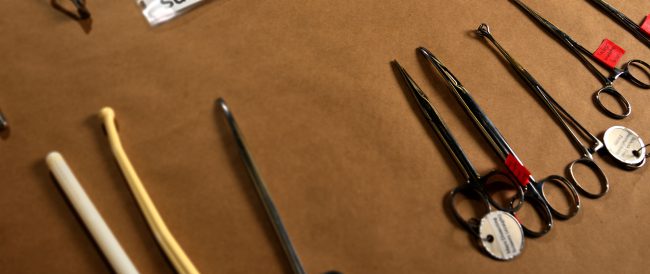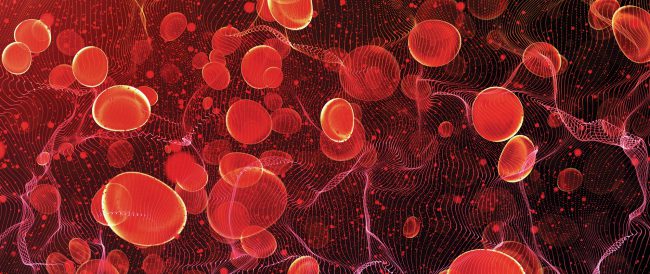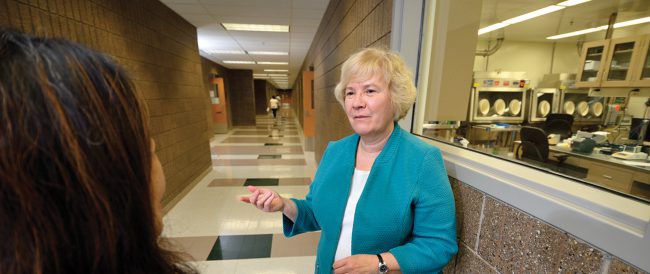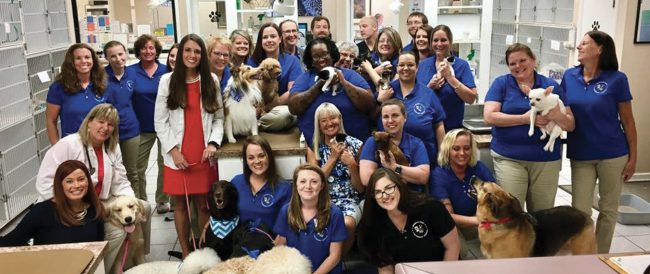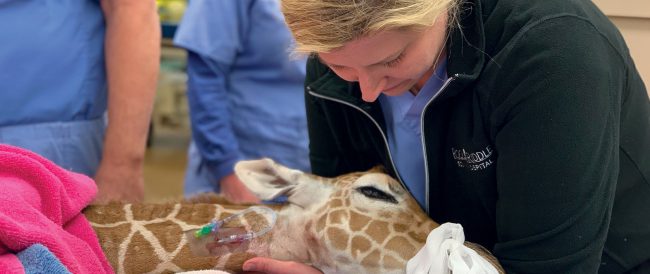 Read More
Read More
Blood clotting, when it happens at the right place and at the right time, does so for a reason. Although the word ‘clot’ inspires thoughts of danger, assuming this process is always bad might cause us to miss out on transformational knowledge, and perhaps, medical opportunities.
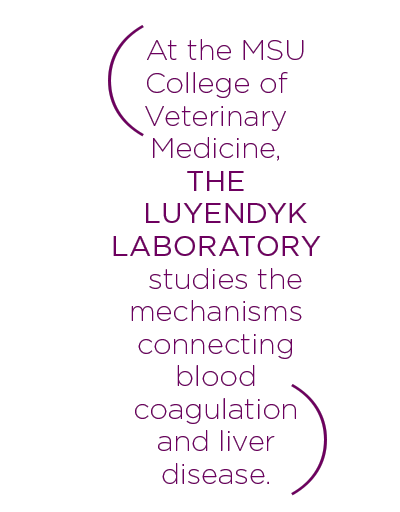
The liver is unique among other organs, in that it can regenerate to maintain normal function, even after as much as 70 percent of it has been removed during liver resection surgery (also known as partial hepatectomy [PH]).
In some patients, insufficient or uninitiated liver regeneration is a major contributing factor to developing liver failure after PH. Liver failure remains one of the most serious complications following PH and is a significant source of morbidity and mortality. These patients then likely face one of two outcomes: they must receive a liver transplant, or the liver insufficiency could be fatal. For patients already being treated for conditions like liver cancer, this further complicates patient care.
Successful regeneration of the remaining liver is essential for normal health after PH. After investigating, Dr. James Luyendyk, professor for the MSU College of Veterinary Medicine, has discovered a key initiator of liver regeneration: clot-forming—and sometimes, fear-inducing—platelets.
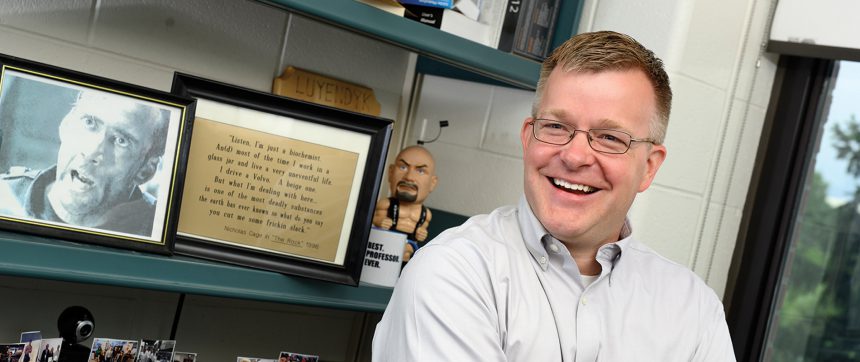
“The predominant thinking has been that clotting is bad for your liver,” Luyendyk says. “When people hear the word ‘clot,’ they think of a family member or friend who was debilitated or killed by a thrombotic event, like stroke or myocardial infarction. What we tend to forget is that the biochemistry behind clotting, when it occurs in the right place and at the right time, does so for a reason. For example, clots can encase bacteria, which helps prevent the spread of an infection. Our opinion is that while the word ‘clot’ inspires thoughts of danger, assuming this process is always bad might cause us to miss out on transformational knowledge and, perhaps, medical opportunities.”
After PH, platelets provide a critical “go” signal for the liver to regenerate. Luyendyk’s research suggests that fibrinogen (fibrin), a protein that’s part of the blood clotting pathway, promotes rapid accumulation of platelets in the regenerating liver. Preventing fibrin deposits also prevented platelet accumulation in the livers of mice undergoing PH. The consequence of this loss was delayed liver regeneration.
Of high importance, these experimental observations in mice aligned with the team’s observations in human patients, which connected fibrin in the liver with regeneration post-PH. The absence of fibrin deposits in the liver is tightly associated with development of post-PH liver dysfunction.
Luyendyk’s discovery sets the stage for potential development of new approaches centered on the use of fibrin to predict which patients will undergo successful liver regeneration after the surgery. Instead of testing and monitoring patients’ coagulation factors days after surgery, doctors may be able to flag patients for whom fibrin deposition may not occur and enable peri-operative interventions to ensure successful liver regeneration
“It’s the people that make MSU spectacular. People drive our recruitment, retention, and success. The environment and culture at MSU promote my success as a researcher and educator, but also enable my occasionally all-too-extroverted personality to show up in a genuinely fun environment.”
The Luyendyk Laboratory is making the most of these opportunities by exploring multiple experimental settings of liver injury to determine the context dependence of their discovery and to address the broad relevance of these findings to various liver diseases.
“Blood clots can certainly be pathologic, and thrombosis is a leading cause of mortality worldwide,” says Luyendyk. “However, it is equally important to consider the positive contribution of components of blood clots, such as fibrin and platelets, in preventing bleeding and infection and promoting wound healing. Indeed, the beneficial effects of fibrin are very much a right place at the right time scenario. Our research suggests that fibrin—in the liver, right away, and in passing—is quite central to liver regeneration. At present, we’re wondering if we can, with the right studies, identify similar phenomena in chronic liver diseases.”
Spartan Story: “You Come Very Highly Recommended.”
Dr. James Luyendyk is one of many MSU alumni who have made their way back to their alma mater. But, his journey into science started long before his time in East Lansing.
“It was a complete accident,” says Luyendyk. “I had two classes I liked in high school: chemistry and accounting. Thanks to my grandfather’s sales background, my first word was ‘money,’ so I decided to get my bachelor’s in accounting.”
Luyendyk remembers attending his freshman-year dorm orientation at Colorado State University. He saw a banner that said “biochemistry.” It stood out to him.
“I had heard that word before,” he says. “I’d heard it in the movie The Rock, which had just hit theaters the summer before I started college. It’s a love-it-or-hate-it 90s action movie with Sean Connery and Nicolas Cage. Cage’s character is an FBI agent specializing in chemical weapons, who is recruited to tackle an emerging threat. In one scene, he’s told,‘You come very highly recommended… BA, MA, PhD… biochemistry, toxicology.’ I remember thinking that was just the coolest thing I’d ever heard.”
Luyendyk changed his major to biochemistry. He went on to earn his PhD in Pharmacology and Toxicology, with an emphasis on environmental toxicology, at MSU. Now, he runs his own lab out of MSU’s Food Safety and Toxicology building. Above his desk sit reminders given to him by his father, including a photograph of Nicolas Cage and a plaque with a related biochemistry quote from the film.
“In the strangest of ways, my career was guided by my aspiration to become Stanley Goodspeed (Cage’s character in the film),” he says. “It turns out that MSU enabled me to do that. At some point, I really need to get a photo with Nic Cage, so if there are any MSU CVM alumni who can make that happen, please reach out.”
Luyendyk says the University’s culture makes it easy for him to convince students to attend MSU for graduate and post-doctoral work, and the history of toxicology at MSU is incredibly rich; the discoveries made by toxicologists at MSU have made a durable impact on the field.
“This place sells itself. It’s the people and the environment for science,” says Luyendyk. “We thrive in the collaborative and friendly spaces. MSU lets me learn, produce, and teach. And the people in my lab are well aware that the training, mentoring, and the research environment at MSU will do nothing but propel them forward in their careers.”
Luyendyk also notes that it isn’t just the science or the opportunities that draw people in. Sometimes, it’s a different kind of connection.
“It’s the people that make MSU spectacular. People drive our recruitment, retention, and success. The environment and culture at MSU promote my success as a researcher and educator, but also enable my occasionally all-too-extroverted personality to show up in a genuinely fun environment,” Luyendyk says. “I was having breakfast with a faculty recruit, and we got to talking about shows our kids were collectively interested in. It turns out that my recollection and albeit not-too-epic performance of the ‘Bubble Guppies’ theme song in the Kellogg Center State Room helped solidify a decision to join the MSU faculty. Interactions like this remind me that as a Spartan, it’s our job to inspire, and you never quite know in what way you’ll make that happen.”
Collaborators and Supporters
- Dr. James Luyendyk, Michigan State University College of Veterinary Medicine and Pharmacology and Toxicology
- Dr. Dafna Groeneveld, Michigan State University College of Veterinary Medicine
- Dr. Ton Lisman, University Medical Center Groningen
- Dr. Patrick Starlinger, Medical University of Vienna
- Michigan State University College of Veterinary Medicine Visiting Scholar Program


